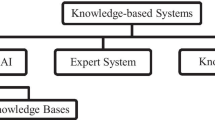Abstract
Control of biopharmaceutical processes is critical to achieve consistent product quality. The most challenging unit operation to control is cell growth in bioreactors due to the exquisitely sensitive and complex nature of the cells that are converting raw materials into new cells and products. Current monitoring capabilities are increasing, however, the main challenge is now becoming the ability to use the data generated in an effective manner. There are a number of contributors to this challenge including integration of different monitoring systems as well as the functionality to perform data analytics in real-time to generate process knowledge and understanding. In addition, there is a lack of ability to easily generate strategies and close the loop to feedback into the process for advanced process control (APC). The current research aims to demonstrate the use of advanced monitoring tools along with data analytics to generate process understanding in an Escherichia coli fermentation process. NIR spectroscopy was used to measure glucose and critical amino acids in real-time to help in determining the root cause of failures associated with different lots of yeast extract. First, scale-down of the process was required to execute a simple design of experiment, followed by scale-up to build NIR models as well as soft sensors for advanced process control. In addition, the research demonstrates the potential for a novel platform technology that enables manufacturers to consistently achieve “goldenbatch” performance through monitoring, integration, data analytics, understanding, strategy design and control (MIDUS control). MIDUS control was employed to increase batch-to-batch consistency in final product titers, decrease the coefficient of variability from 8.49 to 1.16%, predict possible exhaust filter failures and close the loop to prevent their occurrence and avoid lost batches.












Similar content being viewed by others
References
Aubin A, Hynes M, Shockcar J (2007) Aquity UPLC for the rapid analysis of amino acids in wine. Waters Appl Note. 720002044:1–8
Berry BN, Dobrowsky TM, Timson RC, Kshirsagar R, Ryll T, Wiltberger K (2016) Quick generation of Raman spectroscopy based in-process glucose control to influence biopharmaceutical protein product quality during mammalian cell culture. Biotechnol Prog 32:224–234
Biechele P, Busse C, Solle D, Scheper T, Reardon K (2015) Sensor systems for bioprocess monitoring. Eng Life Sci 15:469–488
Challa S, Potumarthi R (2013) Chemometrics-based process analytical technology (PAT) tools: applications and adaptation in pharmaceutical and biopharmaceutical industries. Appl Biochem Biotechnol 169:66–76
Chatzimichalakis P, Samanidou V, Verpoorte R, Papadoyannis I (2004) Development of a validated HPLC method for the determination of B-complex vitamins in pharmaceuticals and biological fluids after solid phase extraction. J Sep Sci 27:1181–1188
Chopda VR, Gomes J, Rathore AS (2016) Bridging the gap between PAT concepts and implementation: an integrated software platform for fermentation. Biotechnol J 11:164–171
Graham LJ (2016) Leveraging data analytics innovations to improve process outcomes. Biopharm Int North Olmsted 29:18–22
Hausmann R, Henkel M, Hecker F, Hitzmann B (2017) 25—Present status of automation for industrial bioprocesses. In: Larroche C, Sanromán MÁ, Du G, Pandey A (eds) Current developments in biotechnology and bioengineering. Elsevier, Amsterdam, pp 725–757
Izat N, Yerlikaya F, Capan Y (2014) A glance on the history of pharmaceutical quality by design. OA Drug Des Deliv 2:1–8
Kourti T (2006) The process analytical technology initiative and multivariate process analysis, monitoring and control. Anal Bioanal Chem 384:1043–1048
Langer E (2013) The future of biopharma. Biopharm Int North Olmsted 26:22–24
Lourenço ND, Lopes JA, Almeida CF, Sarraguça MC, Pinheiro HM (2012) Bioreactor monitoring with spectroscopy and chemometrics: a review. Anal Bioanal Chem 404:1211–1237
Magnúsdóttir S, Ravcheev D, de Crécy-Lagard V, Thiele I (2015) Systematic genome assessment of B-vitamin biosynthesis suggests co-operation among gut microbes. Front Genet 6:148
Mandenius C-F, Gustavsson R (2015) Mini-review: soft sensors as means for PAT in the manufacture of bio-therapeutics. J Chem Technol Biotechnol 90:215–227
Marx V (2013) The big challenges of big data. Nat Lond 498:255–260
Pohlscheidt M, Charaniya S, Bork C, Jenzsch M, Noetzel T, Luebbert A (2013) Bioprocess and fermentation monitoring. Upstream industrial biotechnology: equipment, process design, sensing, control, and cGMP operations. Wiley, Hoboken, pp 1471–1491
Read EK, Park JT, Shah RB, Riley BS, Brorson KA, Rathore AS (2010) Process analytical technology (PAT) for biopharmaceutical products: part I. concepts and applications. Biotechnol Bioeng 105:276–284
Rios M (2014) Analytics for modern bioprocess development. BioProcess Int 12:1–8
Scheper T, Hitzmann B, Stärk E, Ulber R, Faurie R, Sosnitza P, Reardon KF (1999) Bioanalytics: detailed insight into bioprocesses. Anal Chim Acta 400:121–134
Schneider F, Krämer R, Burkovski A (2004) Identification and characterization of the main β-alanine uptake system in Escherichia coli. Appl Microbiol Biotechnol 65:576–582
Swarbrick B, Westad F (2016) An overview of chemometrics for the engineering and measurement sciences. In: Kutz M (ed) Handbook of measurement in science and engineering. Wiley, Hoboken, pp 2307–2407
Ündey C, Ertunç S, Mistretta T, Looze B (2010) Applied advanced process analytics in biopharmaceutical manufacturing: challenges and prospects in real-time monitoring and control. J Process Control 20:1009–1018
Wu H, Read E, White M, Chavez B, Brorson K, Agarabi C, Khan M (2015) Real time monitoring of bioreactor mAb IgG3 cell culture process dynamics via Fourier transform infrared spectroscopy: implications for enabling cell culture process analytical technology. Front Chem Sci Eng 9:386–406
Zhang A, Tsang VL, Moore B, Shen V, Huang Y-M, Kshirsagar R, Ryll T (2015) Advanced process monitoring and feedback control to enhance cell culture process production and robustness. Biotechnol Bioeng 112:2495–2504
Zhao L, Fu H-Y, Zhou W, Hu W-S (2015) Advances in process monitoring tools for cell culture bioprocesses. Eng Life Sci 15:459–468
Author information
Authors and Affiliations
Corresponding author
Rights and permissions
About this article
Cite this article
Vann, L., Sheppard, J. Use of near-infrared spectroscopy (NIRs) in the biopharmaceutical industry for real-time determination of critical process parameters and integration of advanced feedback control strategies using MIDUS control. J Ind Microbiol Biotechnol 44, 1589–1603 (2017). https://doi.org/10.1007/s10295-017-1984-2
Received:
Accepted:
Published:
Issue Date:
DOI: https://doi.org/10.1007/s10295-017-1984-2




